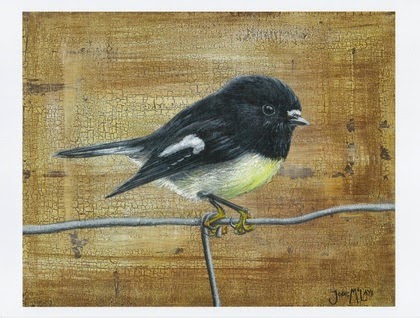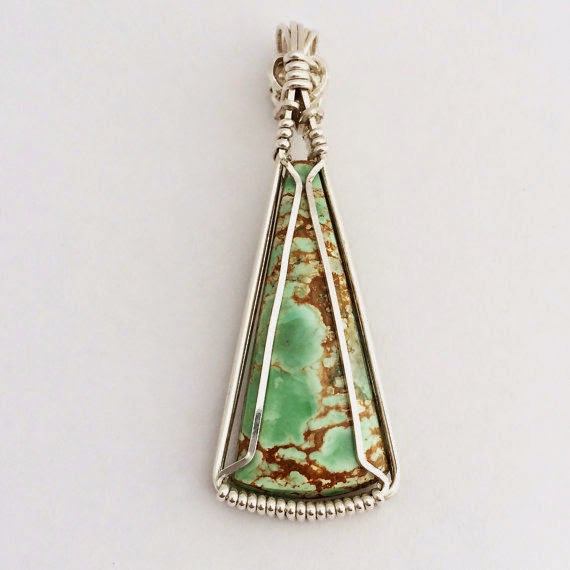by
Aug 27, 2014
Aug 25, 2014
Jewellery for Men
I have been asked a few times over the years whether I have any jewellery for men. Previously my answer has always been "no". However, thinking about it I decided that maybe I should introduce a line of jewellery that was specifically for men.
I now therefore have my first two pieces of jewellery that were designed with men in mind. They are two chainmaille bracelets, a Box Chain Chainmaille Bracelet (pictured above) and a Full Persian Chainmaille Bracelet (pictured below).
In both instances these bracelets are chunkier than my usual chainmaille bracelets. They are also made in Stainless Steel, as opposed to sterling silver, giving them a more industrial look. Finally, rather than the usual more feminine toggle clasp that I often use, I have used a heavy duty parrot style clasp.
Of course, there is nothing to stop women wearing these bracelets for themselves but as I have stated, they were deigned with men in mind and are available in lengths from 7 inches up.
Aug 22, 2014
Aug 21, 2014
A to Z of Gemstones - W is for Willemite
Willemite is a zinc silicate mineral and a minor ore of zinc.It was named after King Willem (William) the first (1772-1843) of
The Netherlands, by the French mineralogist Armand Lévy whom discovered
it in 1830 on former Dutch soil (present day Belgium).
Willemite is usually colorless or white but can be tinted yellow, blue, red, brown and often green. A
canary-yellow variety of willemite from Tsumeb, Namibia has also been
documented.
The willemite from Franklin and Ogdensburg, Sussex County, New Jersey
commonly fluoresces a brilliant green under Short Wave ultraviolet. This fluorescence combined with the red fluorescence of the calcite at Franklin, makes specimens from there even more special.
Some willemite specimens will even show phosphorescence.
Phosphorescence is the ability of a mineral to glow after the initial light is removed.
Willemite occurs as a mineral in metamorphosed
zinc ore deposits. It is uncommon, except at the zinc mines of Franklin
and Ogdensburg in Sussex County, New Jersey. It has however also been found in Arizona, USA; Morsnet, Belgium; St.
Hilaire, Quebec; Tsumeb, Namibia and Greenland.
As a gemstone, faceted willemite is rare although it has been cut as
an uncommon, exotic gem. Fine-quality gemstones have been cut from
orange-yellow willemite crystals. Facet-grade willemite has also been recovered from
the Tsumeb (Tsumcorp) Mine in Tsumeb, Namibia.
I have had trouble finding any examples of Willemite jewelry at all but eventually found a couple:
Aug 20, 2014
Work in Progress - Bi-coloured Quartz Necklace & Earrings (2)
Well a lot of other things seem to have been conspiring to prevent me on getting much further on with this necklace with matching earrings, but four of the motifs have now been fully completed with the final three close to being finished. As previously mentioned five of the motifs will be used for a necklace with the remaining two to be used for the matching earrings. The only thing I'm trying to decide about the motifs now is whether or not to add a small Swarovski crystal at the top of each one.
Once the motifs are all complete I can make the decision about how to join them, and then I will need to decide on the links for completing the chain part of the necklace.
Keep watching this space as I will continue to share the process.
Aug 19, 2014
Aug 18, 2014
Lifestyle Expo Stall
Well unfortunately the picture isn't too good but this is a picture of the stall I had set up at the recent Women's Lifestyle Expo in Wellington. I only had limited space so I bought myself a shelf unit (actually sold as a portable wardrobe) that could easily be dismantled. This allowed me to display an additional six necklace busts to what I had on the table. For the table itself, I decided to do something a bit different and to actually keep the majority of my bracelets, bangles and pendants in their display trays. It actually made it possible for them to be displayed close together without looking too cluttered. I still had my iron "tree" on one side of the table and this is always good for displaying a selection of my necklaces, as well as the earring display on the other side of the table. Overall for quite a limited space I was quite please with how I managed to get my display looking.
Aug 15, 2014
Aug 14, 2014
A to Z of Gemstones - V is for Variscite
Variscite is a relatively rare hydrated aluminum phosphate mineral, and
gem-quality deposits and occurrences are fairly rare. Only the
highest quality material is used for gemstones and ornate carvings. Variscite is named after 'Variscia', the historical name of the Vogtland
district in Saxony, Germany. It was first discovered and described in
1837, when it was found in massive fine-grained aggregate form.
The appearance of Variscite often causes it to be confused with turquoise, but variscite's color tends to be greener rather than blue. Variscite is famed for its attractive green color. Its greens can range
from light pale-green to emerald-green and from apple-green to bluish
green. Solid mint-green colored materials with slight translucency are
usually most desirable. Variscite may also be found in colors other than green, such as purple,
orange, pink, red, brown or yellow. If materials contain less iron than
aluminum in their composition, reddish to violet colors will dominate.
Higher iron impurities will bring out more brownish tones.
Today, the most significant variscite deposits come from Utah, USA,
which is why variscite is sometimes referred to as 'utahlite'. Other
notable variscite sources include Arkansas and Nevada (USA), Australia
(Queensland), Germany, France, Poland, Russia, Spain, Sweden and Brazil.
Although all variscite is valued by collectors, emerald-green variscite
from Utah and the black spider-webbed variscite from Nevada are among
the most desirable gemstone materials.
Above are some examples of Variscite jewellery from a couple of members of the Jewelry on Etsy team. Below are some more examples of Variscite jewellery also found on Etsy.
Aug 6, 2014
Chrysanthemum Chainmaille Tutorial
For those who like to "do it themselves" here is a tutorial for my Chrysanthemum Chainmaille Bracelet.
Materials
Per Chrysanthemum Flower 18g 6mm Jump Rings – 2
18g 5mm Jump Rings – 16
18g 3mm Jump Rings – 16
To
Join Flowers 18g
3mm Jump Rings – 10
Other One Clasp
- Open 16 3mm rings and 16 5mm rings. Close 2 6mm jump rings.
- Link the 2 6mm jump rings through one of the open 3mm rings and then close it.
- Now continue to link the 3mm jump rings to the 2 6mm rings.
- There are 16 3mm rings per flower and all need to be joined to the 2 6mm rings to form the inner core of the flower. Be aware that the last one or two will be a tight fit.
- Now take an open 5mm ring and place it through 2 of the 3mm rings in the inner core.
- The next 5mm ring added should go through the 2nd of the two 3mm rings used for the 1st 5mm ring, being placed behind the 1st ring added and then also through the next ring in the circle. Each new 5mm ring added should go through the previously linked 3mm ring plus 1 new one. It should always sit behind the 5mm ring already in place.
- The last 5mm ring to add is the trickiest as it needs to go through the 2nd of the two 3mm rings just used, sitting behind the 5mm already added, but it also now needs to go through the 1st 3mm ring used at the beginning (Step No.7), and sit IN FRONT of the original 5mm ring added.
- Repeat steps 1-7 to make another 5 Chrysanthemum flowers.
- The Chrysanthemum units are joined together with 2 3mm rings. Take an open 3mm ring, put through one outer ring from one flower and one outer ring from another flower and close. Do the same with another 3mm ring making sure that you use the next outer rings around so that the two joined rings are next to each other.
- You now need to continue joining the flowers in the same way, ensuring that the petals (outer rings) that you use for the 2nd join are the exact opposite side of the flower to the rings you have already used. (There should be 6 rings between the joined rings).
- Now add a clasp to each end and your bracelet is complete.
Subscribe to:
Comments (Atom)




























